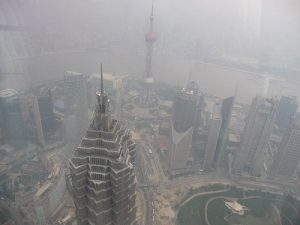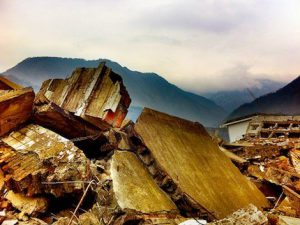Beijing and San Francisco share the urban challenges of high costs of living, especially for housing, traffic congestion, social activism, and a growing disparity between rich and poor. In addition to the two regions being about the same size, both regions share a high potential for adverse air pollution due to the extensive mountain ranges surrounding the regions.
Table 1 shows a basic demographic and economic comparison of the two regions.
|
San Francisco Bay Area |
Metropolitan Beijing Region |
|
9 counties, 101 cities |
16 districts, 289 towns |
|
~7.2 million people |
~20 million people |
|
~5.5 million cars |
~5.2 million cars |
|
~18,000 square kms. land area |
~16,800 square kms. land area |
|
3 large urban centers |
1 large metropolitan area |
|
3 major airports |
1 very large airport |
|
Large, knowledge-based economy |
Large, diversified economy |
|
Regional GDP: ~$400 billion US |
Regional GDP: ~$248 billion US |
|
Per capita GDP: ~$45,000 US |
Per capita GDP: ~$12,500 US |
Table 1. Beijing and San Francisco Regional Comparison
Despite the regional similarities, there is a stark contrast in air pollution, especially ozone and PM2.5 between the two regions. The ozone and PM2.5 particulate air pollution in Beijing is among the highest in the world, while the ozone and PM2.5 levels in San Francisco are among the lowest for highly populated urban areas.
However, the San Francisco region has previously suffered from high levels of ozone, particulate and PM2.5 air pollution, especially during the late 1960s and 70s. Its cleaner air is the result of more than 40 years of comprehensive air pollution control. Understanding how it achieved this could be of value to Beijing and other cities suffering from similar pollution problems.
Ozone and PM2.5 air pollution share many common characteristics. Although there are primary sources of PM2.5 pollution, both pollutants are formed through secondary reactions of precursor emissions. Thus, the precursors of ozone, namely volatile organic compounds and nitrogen oxides emissions, are also precursors of PM2.5 particulates. By reducing volatile organic compounds and nitrogen oxides emissions to reduce ozone, PM2.5 emissions can be controlled.
First steps in San Francisco
The earliest measures to tackle the San Francisco air pollution problem were local initiatives. The Bay Area Air Pollution Control District (BAAPCD) was created in 1955. Two years later they adopted their first control regulation banning open burning at rubbish dumps and wrecking yards, in reaction to severe particulate pollution in the region.
The next important step occurred at a national level. Modern day air pollution control efforts in the US began with the passage of the 1970 Amendments to the Clean Air Act (aka 1970 Clean Air Act). The current US Environmental Protection Agency (EPA) was also created in 1970.
Given the rigorous requirements of the 1970 Clean Air Act, the San Francisco region began preparing mandatory State Implementation Plans (SIP) to meet national air quality standards in the early 1970s; this laid the foundation for the region’s air quality strategies.
Early stages: 1960s/70s
During the 1970s, the most severe air pollution problem in the San Francisco region was ozone. In the late 1960s, the San Francisco region exceeded the ozone standard almost 100 times per year. Ozone is a complex secondary pollutant formed during photochemical reactions of reactive hydrocarbons and nitrogen oxides in the presence of sunlight.
To reduce ozone, pollutant reduction measures need to be targeted at the ozone precursors, reactive hydrocarbons (also referred to as volatile organic compounds) and nitrogen oxides emissions. The major air pollution control efforts of the San Francisco region since the 1970s have been targeted at reducing volatlie organic compounds and nitrogen oxides emissions from all possible sources.
Herein lies another parallel between the Bejing and San Francisco regions: both are prone to high levels of ozone or photochemical smog. During the 2008 Olympics in Beijing, for example, the Blue Skies campaign to promote clean air for the Olympics was a strategy largely designed to lower ozone levels by reducing volatile organic compounds and nitrogen oxides emissions from cars, power plants, industrial sources, and construction activity.
The ozone control strategy for the San Francisco region has involved a continuing planning process, as well as an ongoing regulatory set of control programs. Each plan contains a set of distinct control measures, e.g. more stringent auto emissions standards, vehicle inspection and maintenance requirements, various industrial controls, fuel standards, etc. Every five years, plan updates were prepared and additional control measures added, old measures were modified, and some measures eliminated or delayed.
Every measure proposed and included in the SIP needed a cost analysis, assessment of technical effectiveness and feasibility, and implementation schedule. Not surprisingly, during the 1970s and 1980s, most industrial control regulations were applied to large facilities, e.g. chemical plants, refineries, auto manufacturing, power plants. Depending on the specific industry, EPA, California and regional authorities required either reasonably available control technology (RACT) or best available control technology (BACT) for the facilities. Similarly, motor vehicle controls began with private cars due to their large numbers.
California set even more stringent auto emission standards than the US EPA, requiring the cleanest cars in the world be produced for California. To complement these tight standards, California also adopted requirements for annual inspection and maintenance of in-use vehicles to ensure private cars would continue to meet stringent exhaust emission requirements during the lifetime of their use.
As a result of the SIP and control measures implemented during the 1970s and 1980s, ozone violations in the San Francisco region became less frequent and occurred with less severity, i.e. peak readings. Instead of having 70-90 ozone violations per year, now the violations were occurring about half as frequently. This was clearly a significant improvement, but insufficient to meet the requirements of the Clean Air Act.
Meteorological factors are also very important in determining ozone levels. Two years with approximately the same levels of pollutant emissions can result in very different peak levels of monitored ozone, particulate and PM2.5. Depending on the region, natural emissions of volatile organic compounds and nitrogen oxides can be significant as well.
Due to their nature, however, reliable estimates of natural emissions are difficult to make, and although estimates are included in most emission inventories, there is considerable uncertainty in these estimates. For planning purposes, most studies assume natural emissions are relatively constant over time and difficult — if not impossible — to control with human intervention.
Ongoing air quality action: 1990s/2000s
The SIP updates of the 1990s and early 2000s continued to focus on reducing volatile organic compounds and nitrogen oxides emissions. Due to the unique photochemistry of the San Francisco region, ozone computer modeling showed more effectiveness at reducing ozone levels by controlling volatile organic compounds emissions than nitrogen oxides emissions.
Ozone responds non-linearly to reductions in volatile organic compounds and nitrogen oxides emissions depending on each region’s characteristics. Thus, during the 1970s and 1980s, roughly 50% of the manmade volatile organic compounds emissions were controlled (i.e. from about 1,500 tonnes/day to about 750 tonnes/day). Nitrogen oxides emissions were controlled much less. These controls reduced and nitrogen oxides emissions from about 1,000 tonnes/day to about 800 tonnes/day (or some 20%).
To further control volatile organic compounds and nitrogen oxide emissions in order to reduce ozone levels, several approaches were carried out:
1. Further control of the large stationary sources regulated in the 1970s and 1980s;
2. Raising the California motor vehicle emission standards even higher, i.e. even cleaner new cars;
3. Adoption of new or tighter emission standards for other vehicle categories, e.g. buses, heavy-duty trucks, motorcycles, boats, trains, and planes;
4. Adoption of specifications for improved (i.e. lower pollutant emitting) fuels;
5. Adoption of emission standards for small gasoline powered equipment, e.g. lawn mowers, gardening equipment, generators, chain saws;
6. Regulation of small and medium size businesses that are sources of volatile organic compounds;
7. Implementation of measures to improve traffic flow, promote carpooling, and more transit use; and
8. Initiation of control programs for days with high ozone potential.
Taken together these additional programs significantly reduced volatile organic compounds and nitrogen oxides emissions throughout the region, further contributing to improved ozone air quality. The programs affected thousands of businesses and solicited the participation of the entire region. Through mass public education — newspapers, TV, radio, internet — everyone was asked to be a part of the regional efforts to clean the air.
As new control technologies were developed, tighter regulations were adopted for specific industries. Thus, a factory that had reduced 85% of its pollutants during the 1970s might be asked in the 1990s to further reduce its pollutant emissions by another 67%, resulting now in 95% reductions compared to its unregulated operations.
This regulatory approach had several positive outcomes. Large stationary sources slowly, but steadily continued to be a smaller part of the regional air pollution problem. With ongoing technological improvements in control effectiveness, large companies were continually upgrading their control equipment and processes. Many companies were able to adapt to the tighter regulations, and some prospered because the new processes often increased the company’s productivity.
However, some companies were not able to adapt and closed, or moved out of the region, sometimes to a less regulated environment in another state or country. Today, San Francisco has less manufacturing and industrial activity than 40 years ago, with the regional economy having been transformed to more knowledge-based and cleaner industries.






